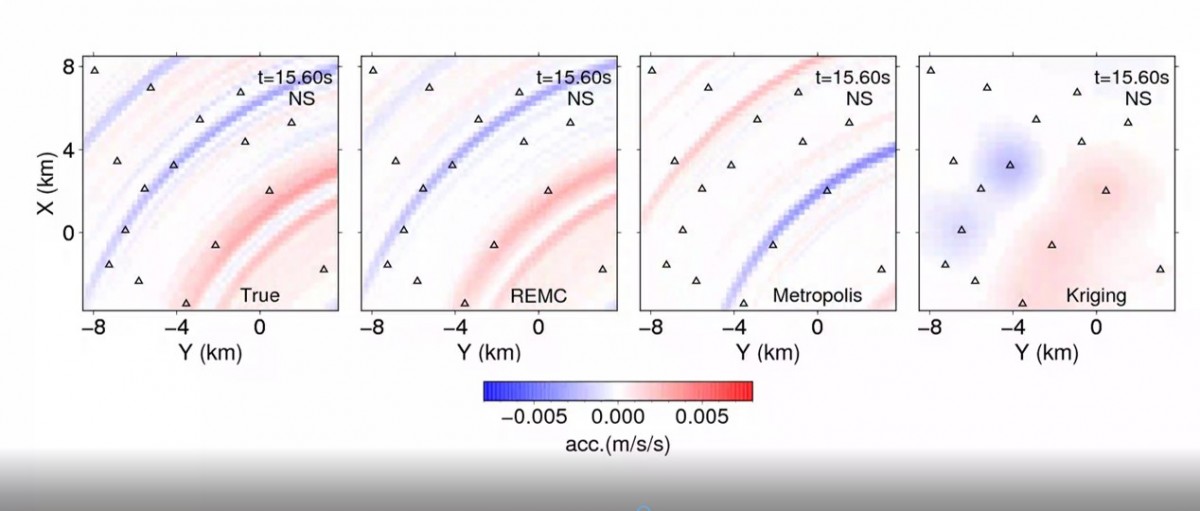Masayuki Kano, Hiromichi Nagao, Daichi Ishikawa, Shin-ichi Ito, Shin’ichi Sakai, Shigeki Nakagawa, Muneo Hori and Naoshi Hirata
208 (1), 529-545 doi: 10.1093/gji/ggw410
SUMMARY
Earthquakes sometimes cause serious disasters not only directly by ground motion itself but also secondarily by infrastructure damage, particularly in densely populated urban areas that have capital functions. To reduce the number and severity of secondary disasters, it is important to evaluate seismic hazards rapidly by analysing the seismic responses of individual structures to input ground motions. We propose a method that integrates physics-based and data-driven approaches in order to obtain a seismic wavefield for use as input to a seismic response analysis. The new contribution of this study is the use of the replica exchange Monte Carlo (REMC) method, which is one of theMarkov chainMonte Carlo (MCMC) methods, for estimation of a seismic wavefield, together with a 1-D local subsurface structure and source information. Numerical tests were conducted to verify the proposed method, using synthetic observation data obtained from analytical solutions for two horizontally layered subsurface structure models. The geometries of the observation sites were determined from the dense seismic observation array called the Metropolitan Seismic Observation network, which has been in operation in the Tokyo metropolitan area in Japan since 2007. The results of the numerical tests show that the proposed method is able to search the parameters related to the source and the local subsurface structure in a broader parameter space than the Metropolis method, which is an ordinary MCMC method. The proposed method successfully reproduces a seismic wavefield consistent with a true wavefield. In contrast, ordinary kriging, which is a classical data-driven interpolation method for spatial data, is hardly able to reproduce a true wavefield, even in the low frequency bands. This suggests that it is essential to employ both physics-based and data-driven approaches in seismicwavefield imaging, utilizing seismograms from a dense seismic array. The REMC method, which provides not only optimum estimates of model parameters but also their uncertainties without become trapped in local maxima, is a powerful method for the stochastic estimation of seismic wavefields.


